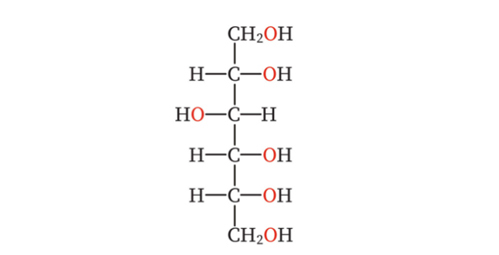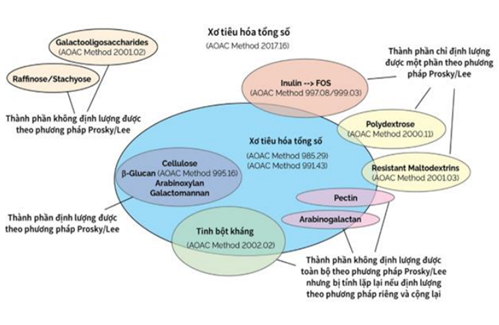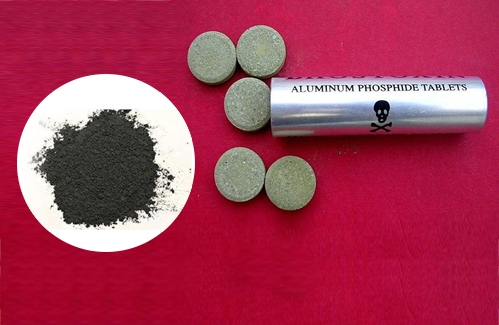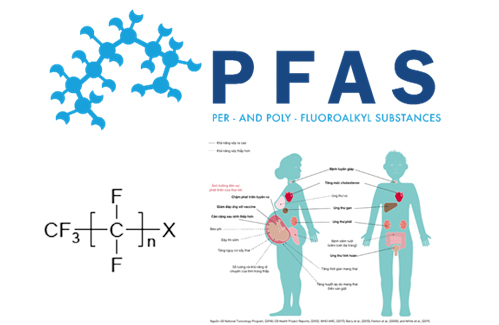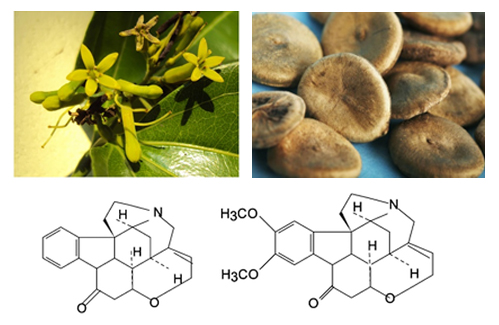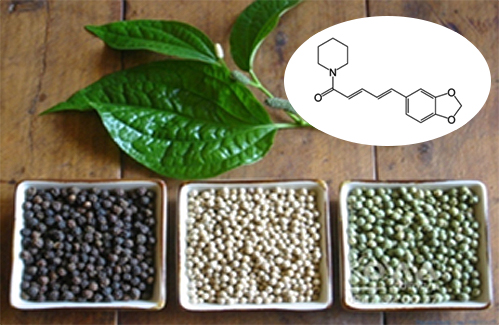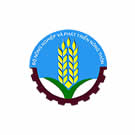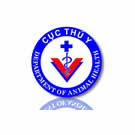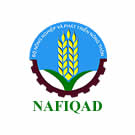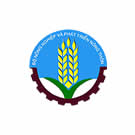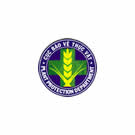- Folder Technical News
- Views 1266
- Last Updated 10/04/2023
Capparis versicolor, which Vietnamese name is “Hong trau”, grows wild in the forest, common in mountainous areas along the border, the fruit is large and beautiful, eye-catching, so they are often picked and eaten. In many cases, people have been hospitalized and even died after eating the fruit. In recent years, the National Institute of Food Control has determined the cause of the poisoning case related to Capparis versicolor fruit and participated in communication activities for health officers and people to prevent persimmon poisoning.
1. Poisoning case related to Capparis versicolor
Recently, many localities have had reports about the poisoning of Capparis versicolor fruit. Since 2014, the National Institute for Food Control has received a number of reports of poisoning related to Capparis versicolor fruit as follows:
In August 2014 in Cao Bang, in the area of Lung Race village, Xuan Truong commune, Bao Lac district, there was a case of poisoning due to eating the same forest fruit suspected of having natural toxins, causing ten people to be poisoned and three people to die. Provincial Food Safety and Hygiene Department coordinated to investigate, and collect samples of poisonous fruits and initially identify the species of poisonous plants and fruits in Cao Bang province as Capparis versicolor.
In August 2014, in Ha Giang, there were two cases of poisoning related to eating wild fruits. The first case happened in Co Sung village, Son Vi commune, Meo Vac district, with three Hmong ethnic children, while helping their family to herd goats, ate wild fruit, causing all three to be poisoned and two deaths. The second case happened in Chung Pa village, Duong Thuong commune, Yen Minh district, with two adults and one child of the Hmong ethnic group, while herding buffaloes, they saw beautiful forest fruits, so they picked then ate them, causing all three to be hospitalized and one child died. Immediately after the food poisoning cases occurred, the District Health Center and the Ha Giang Provincial Food Safety and Hygiene Sub-Department took samples of the poisonous fruit and sent them to the upper level for testing and determining that the wild fruit was from Capparis versicolor.
In August 2015, in Lao Cai, in Seo Tung village, Tung Chung Pho commune, Muong Khuong district, there was a poisoning incident involving five children going to the forest to collect firewood and picking a fruit of a forest tree with a brown shape and purple color to eat, leading to one child death. This fruit is confirmed by the local people as Capparis versicolor fruit.
In October 2021, the Food Safety and Hygiene Department of Lao Cai province informed about food poisoning in a group of seventeen students in Hat Tinh village, Chieng Ken commune, Van Ban district, seeing many ripe fruits on the roadside trees, so they invited each other to pick the fruit, in the afternoon all were hospitalized, in which one student died. Vietnam National Children's Hospital received and treated 08 patients and sent sixteen specimens (blood, urine) to the National Institute of Food Control to determine the cause. Test results found that urine samples detected Stachydrine, a toxic alkaloid of Capparis versicolor fruit.
Capparis versicolor fruit is a forest fruit with a beautiful purple color, so it is easy for people to confuse it with edible fruits, which can be picked to eat or bring to the market to sell.
2. Introduction to Capparis versicolor
- Scientific name: Capparis versicolor Griff., family: Capparaceae.
- Capparis versicolor is also known by other names such as “Rom”, “Me ga”, “Khua mat”, “Moc qua” (Thai Nguyen), “chi pan sloa” (Cao Bang), “gai xanh” …
- Description: Capparis versicolor often grows in rocky areas, it is in the form of a vine, and the bark of the trunk is light green, with sharp, hard spines. The leaves are about the size of two adult fingers, about 11-12 cm long, and the color of the leaves is dark green. The fruit is round, about the size of a chicken egg, with smooth, hairless skin. The young fruit has light green skin. When the fruit is ripe, the shell is purple and slightly soft. When it's cut inside, it has pink skin. Each fruit has 4-12 seeds, the seeds have a layer of milky white pulp, watery and soft covered, inside the pulp, there is a grain the size of a corn kernel with purple color and slightly flattened. The fruit ripens in June, July, and August every year.
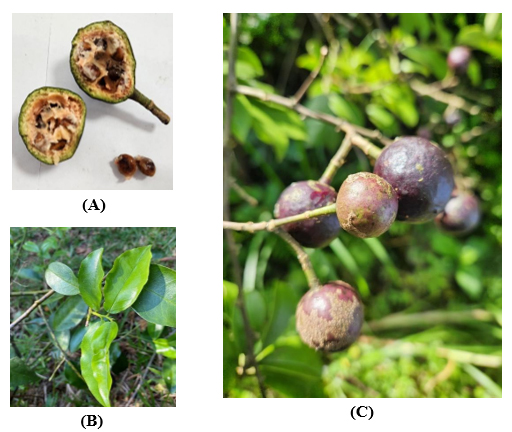
Figure 3 Capparis versicolor
(A - Fruit and seeds; B - Leaves; C - Fruit and branches)
- Habitat: The tree grows scattered in secondary forests of limestone mountains, shrub beds, or forest edges, at an altitude of 100-1000 m, often found in Lao Cai, Ha Giang, Tuyen Quang, Vinh Phuc, Nghe An, Khanh Hoa, …
- Some plants are easily confused with Capparis versicolor: Crateva adansonii, Chrysophyllum cainito
Table 2 Some fruits are easily confused with Capparis versicolor
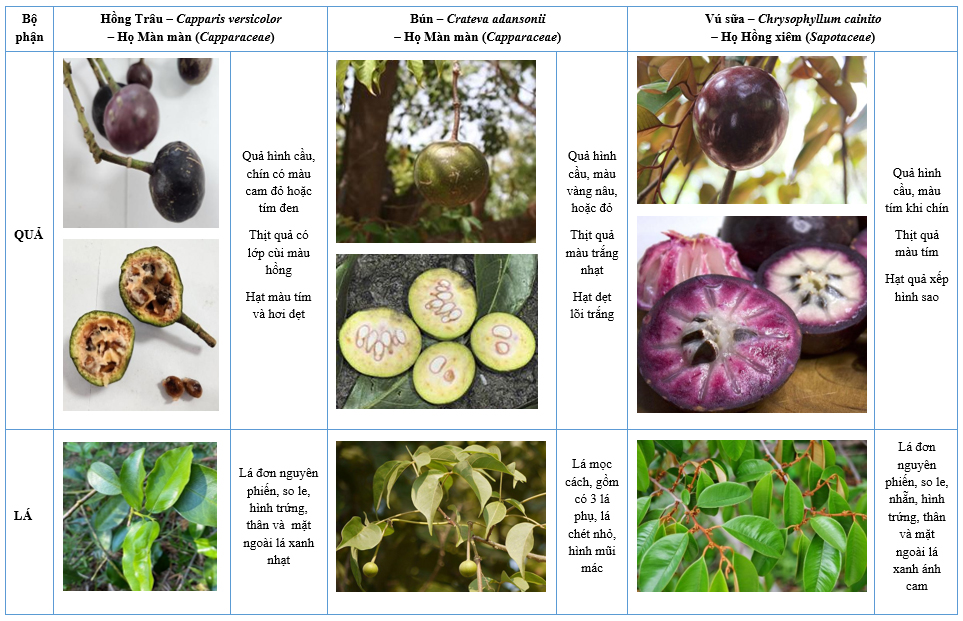
3. Toxin of Capparis versicolor
The toxin of Capparis versicolor fruit is an alkaloid, which is mainly contained in the kernel (not found in the pulp) of the fruit. Alkaloids have many different subgroups, with common characteristics being many heterocycles, some typical substances: Stachydrine, Cadabicine, Capparispine, Capparisine, …
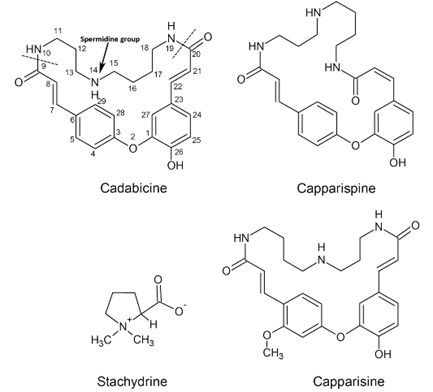
Figure 4 Some typical toxic alkaloids of persimmon fruit
Their toxicity affects mainly cardiomyocytes and causes acute pulmonary edema. Animal studies have shown that the minimum gastrointestinal lethal dose of granules for rabbits is 18 g/kg body weight respiratory and cardiovascular collapse.
4. Prevention and treatment of Capparis versicolor
*Symptoms of poisoning
According to information from the Vietnam Food Safety Authority (Ministry of Health), the poisoning are shown after 3-6 hours of eating with acute symptoms such as headache, nausea, vomiting, diarrhea, elevated liver enzymes, electrolyte disturbances due to dehydration… The main symptoms include:
- In the early stages of poisoning, patients have symptoms: dizziness, fatigue, and lethargy.
- Cardiovascular: causing arrhythmia, and cardiovascular collapse.
- Respiratory: causing acute pulmonary edema leading to respiratory failure.
- Digestion: causing severe abdominal pain, vomiting, diarrhea, ...
- Other organs such as the liver, kidney...
- If not detected early, and treated promptly, it will lead to life-threatening danger.
*Prevention
- Cut down the Capparis versicolor tree.
- Disseminate knowledge, and avoid poisoning cases due to confusion with other plants that can be used as food.
*Treatment of Capparis versicolor poisoning
Since there is no specific treatment, treating the underlying cause and treating the symptoms is key.
- In case of detecting poisoning patients related to Capparis versicolor fruit it is necessary to notify the health authorities and transport the patient to the hospital by motor vehicle;
- Induce vomiting, wash the stomach as soon as possible, and take activated charcoal at a dose of 1-2 g/kg body weight with 4-6 packets of sorbitol (if not, you can give egg whites).
- Enhance the elimination of toxins, and maintain vital functions (cardiac support, respiratory support, anticonvulsant, anti-acute pulmonary edema).
- Test, monitor and adjust electrolytes in the blood.
5.Propaganda activities to prevent Capparis versicolor poisoning
From October to December 2022, the National Institute of Food Control carried out the activity "Coordinating with authorities to propagate about the risk of poisoning with leaves of Gelsemium elegans and Capparis versicolor” (Vietnamese name is La ngon and Hong trau) together with the Ha Giang Food Safety and Hygiene Department and Lao Cai Food Safety and Hygiene Department, with the result a set of propaganda materials (including posters and leaflets) to provide general information on poisoning, ways to prevent poisoning by mistake for health workers/propaganda staff, thereby guiding/propagating concise and concise information to the people.
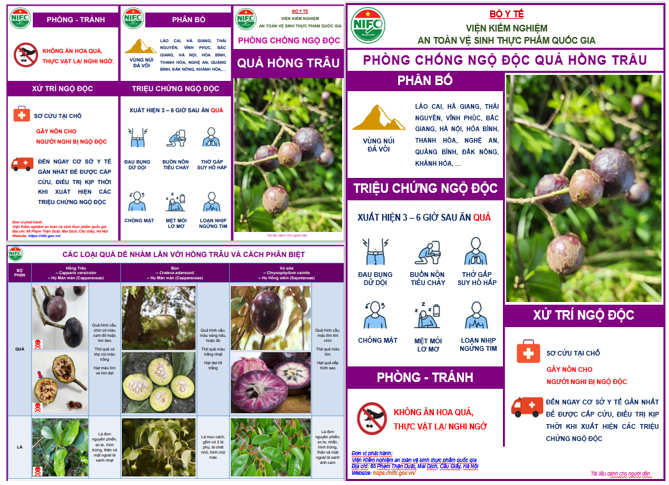
Figure 3 Propaganda leaflets and posters for the people
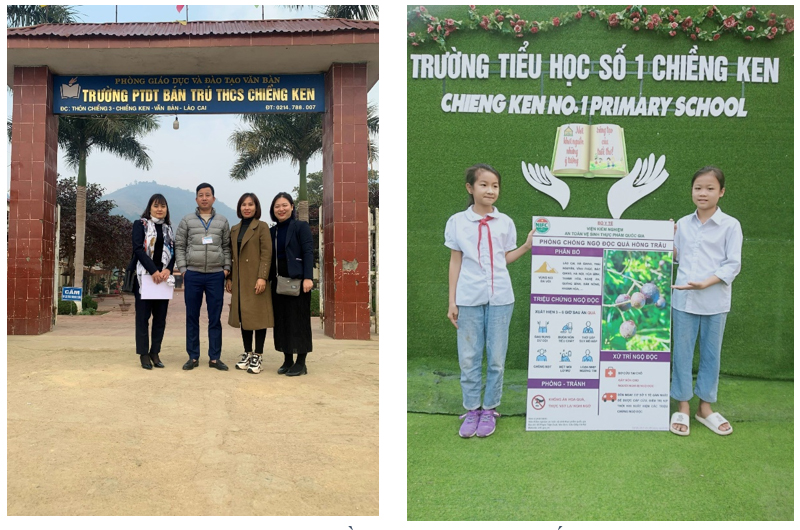
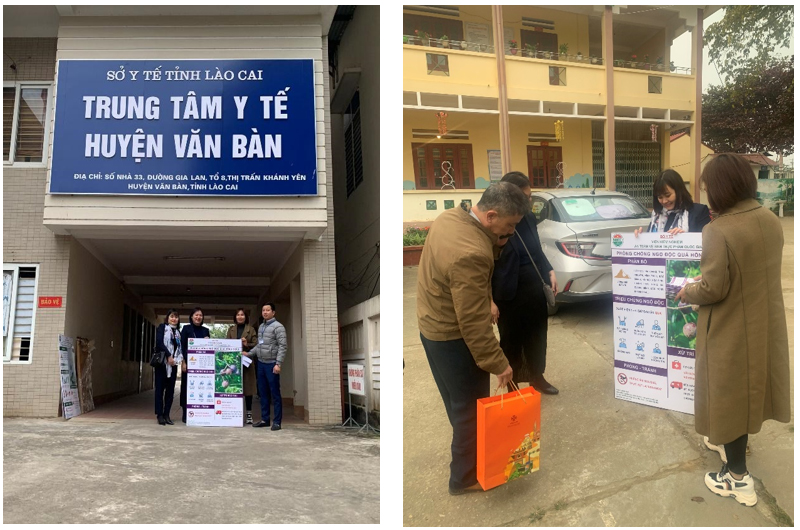
Figure 4. Handing over propaganda materials at Van Ban District Health Center (Lao Cai). Here, propaganda materials are sent directly to Chieng Ken No. 1 Primary School and Chieng Ken Secondary School Semi-Boarding Ethnic Minority School, two localities where poisoning has occurred.
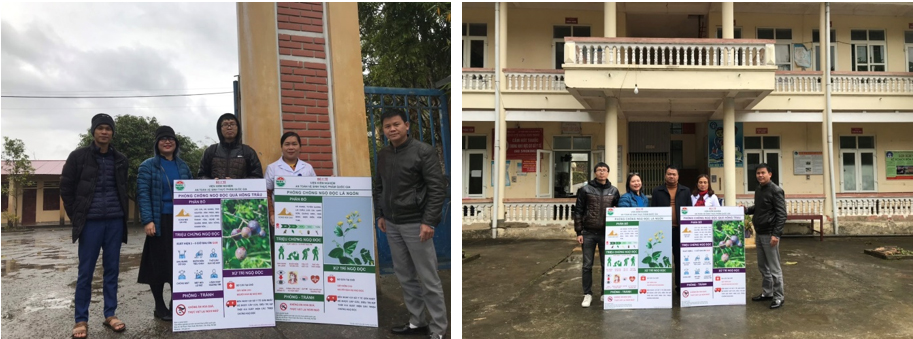
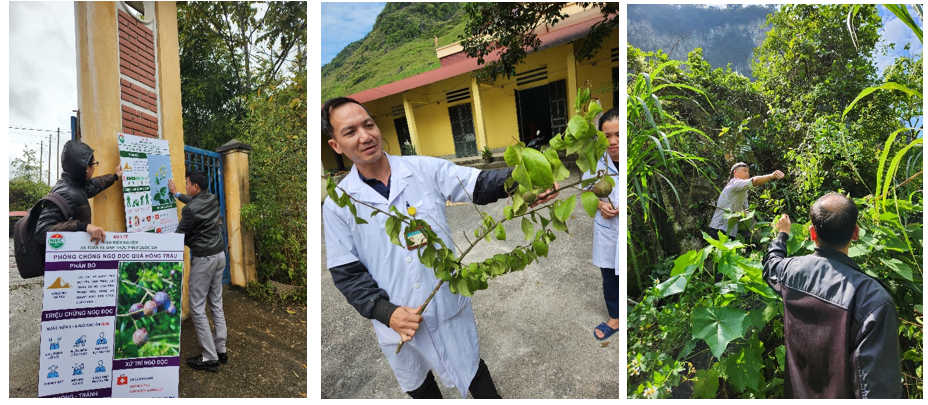
Figure 5. Propaganda activities at Dong Minh Commune Health Station,
Lao Va Chai Commune Health Station, and Duong Thuong Commune Health Station, Yen Minh, Ha Giang
With the desire to contribute to reducing the cases of poisoning caused by plants in particular and natural toxins in general, NIFC regularly conducts investigations and identification of the poisoning causes as well as poisoning prevention communication. Communication activities will help to prevent and limit cases of natural plant poisoning. At the same time, timely test results will help confirm the cause of poisoning and help doctors to direct treatment.
Leaflets with prevention of Capparis versicolor poisoning: Link pdf
References
1. Cục An toàn thực phẩm (2014). Dự phòng và xử trí ngộ độc quả cây Hồng Trâu.
2. Lê Đình Bích, Trần Văn Ơn (2007), Thực vật học, Nhà xuất bản Y học.
3. Bộ Y tế (2015), Hướng dẫn chẩn đoán và xử trí ngộ độc.





